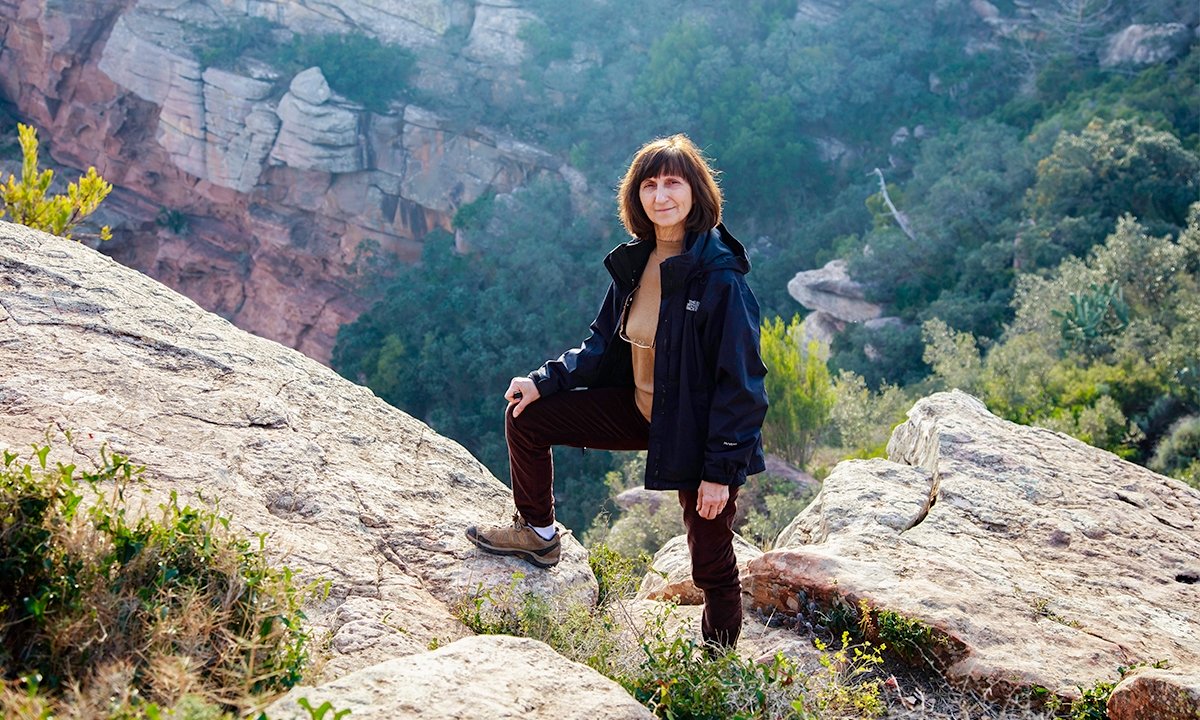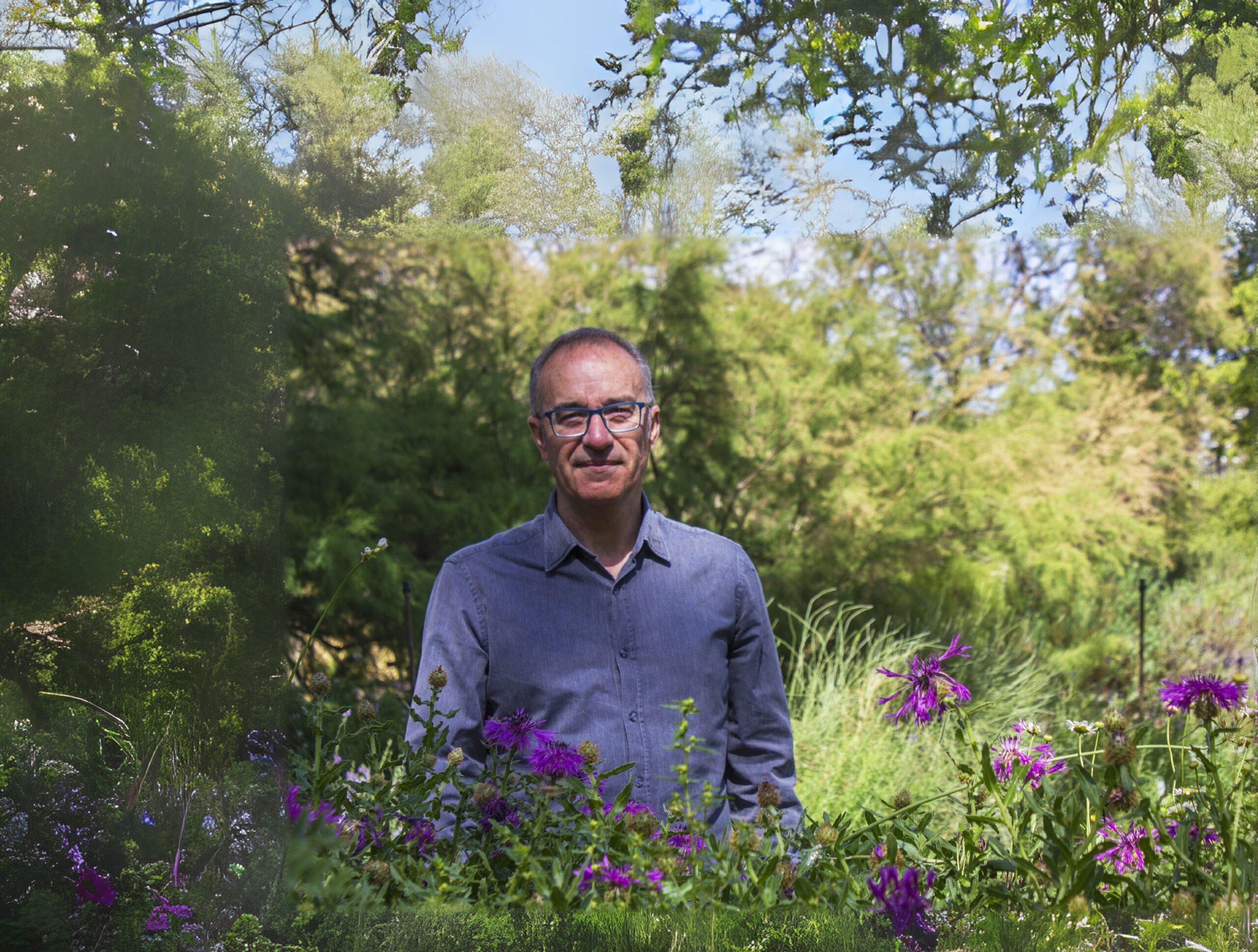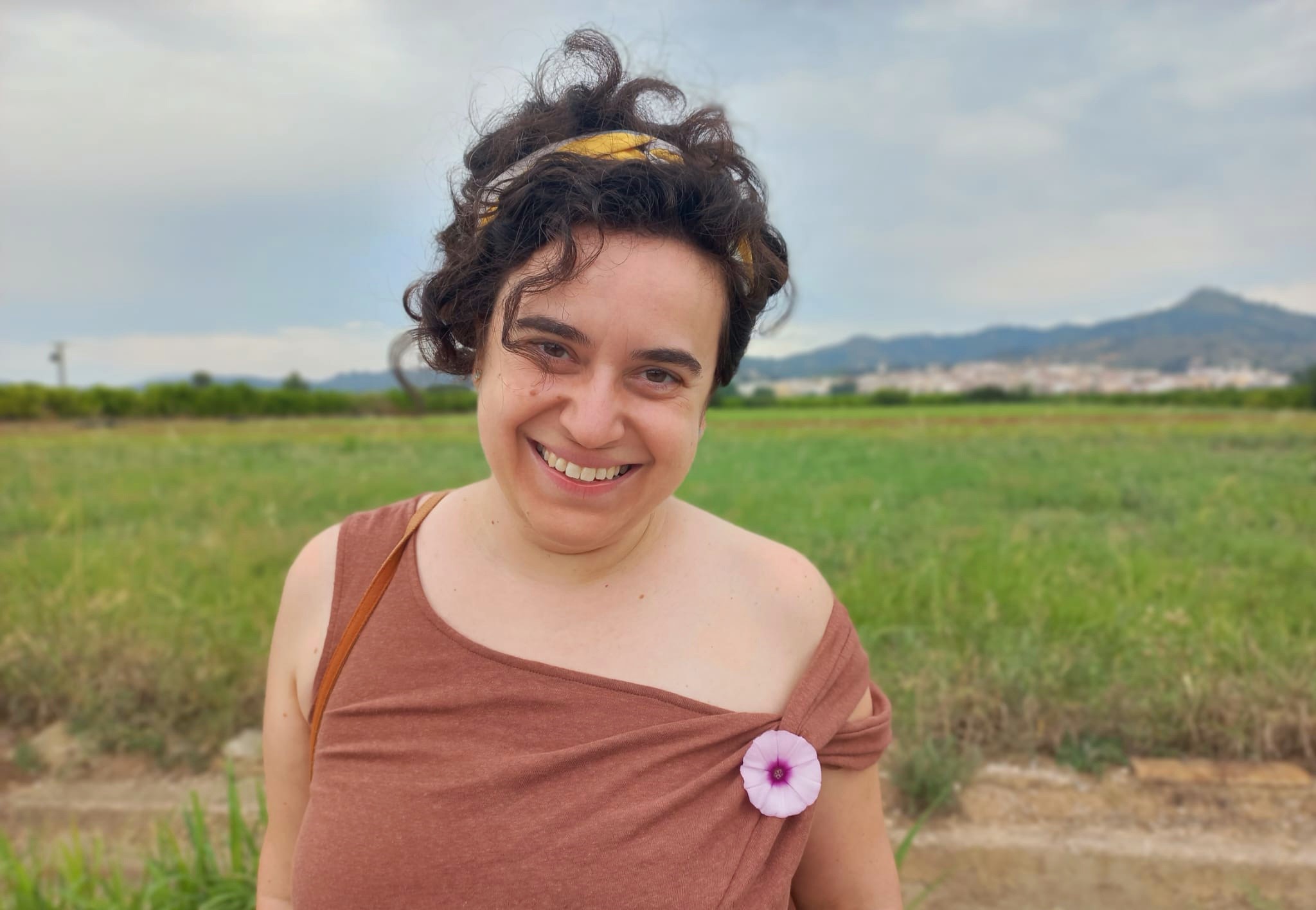Botanist of the month: Josep Enric Oltra
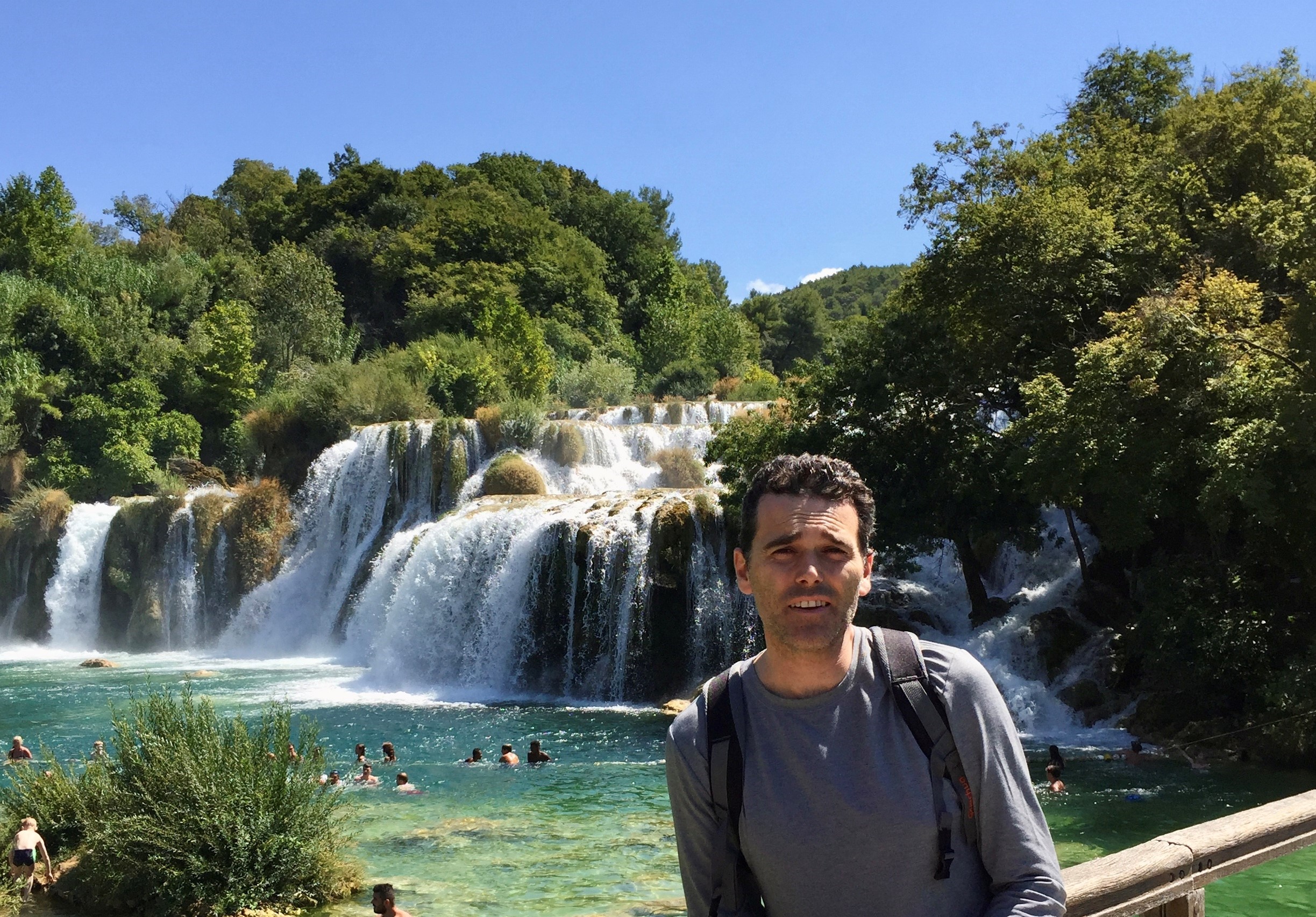
Josep Enric Oltra, our botanist of the month, tells us how, since his childhood in a rural environment, nature and plants have been an essential part of his life, marking his path towards botany. After graduating in Biological Sciences, he began a professional career in which the management of micro-reserves and the study and conservation of protected flora have played a leading role. In addition, his commitment to scientific outreach has led him to publish books and articles on Valencian flora, ethnobiology and ethnonature.
Why did Botany appeal to you?
I grew up in a rural environment and I have always been very close to nature. I have had contact with plants since I was a child and the plant world has been part of the games and landscape of my childhood. In the 70s and early 80s of the last century, the digital entertainment that children have today didn’t exist, nor did extracurricular activities. Therefore, in those years, children in the villages spent many hours playing in nature. Without being aware of it, during those years I was incubating experiences and observations that have ended up shaping the way I am as an adult. Playing surrounded by wild plants and observing them was an everyday part of my childhood. I had also always seen at home the use of some plants for medicinal purposes by my parents and grandparents. And I must also say that during the last years of primary school, what was called the second stage, a teacher of mine took us to the school every Monday morning some fresh plants put in glass jars with water and identified with their scientific and common names, so that we could learn to recognise them and we copied the names in our school notebook.
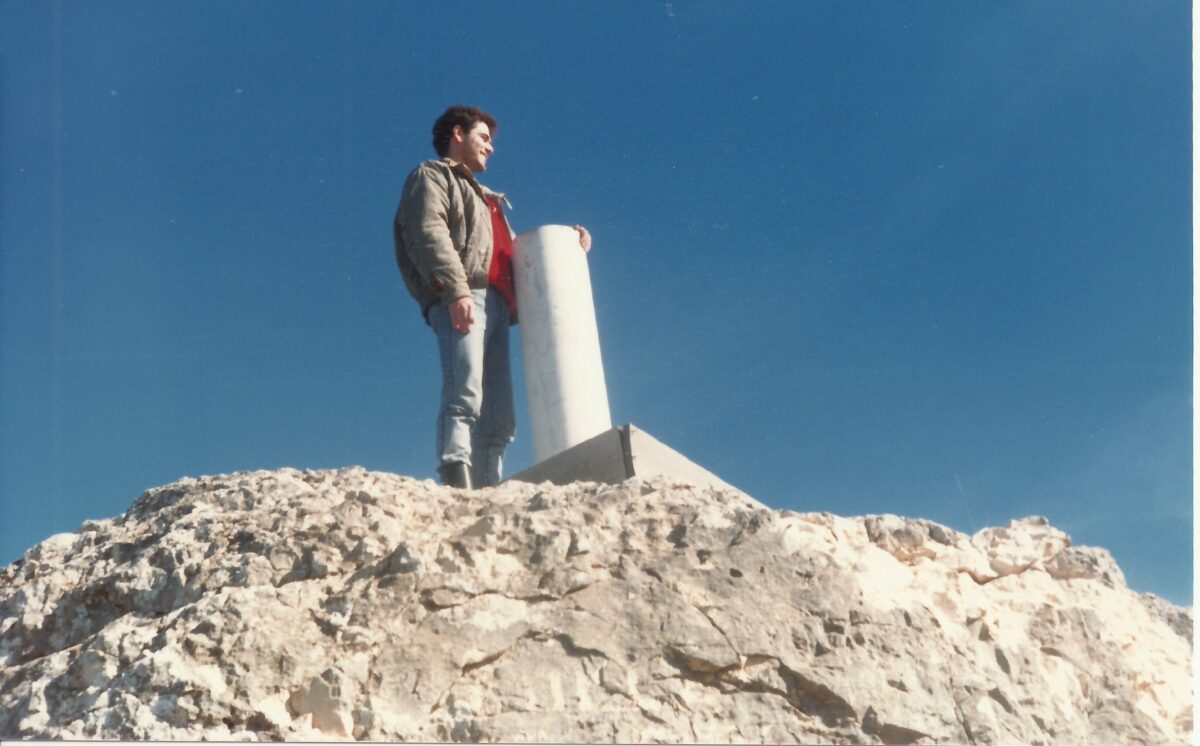
But it wasn’t until I was a teenager that the idea of studying plants came to me. I remember very well a first botanical excursion, at the beginning of the 90s, when, motivated by an article that had been published a few years earlier in a local book about plants in the Quatretonda mountain range, I decided to go walking with my rucksack, alone, in search of the fritillaria, which according to the article could be found in March in a specific place and had a magnificent flower. In the end I didn’t find it, but I have very good memories of that first botanical excursion, because I was able to observe for the first time some plants I didn’t know, such as the flowering palmate anemone. The very search for plants, especially the rarer ones, and the desire to identify them in order to get to know the flora of my own environment, was what attracted me most to botany at first. I always say that identifying plants and giving them a name is something that really hooks you, and I was hooked from the very first moment.
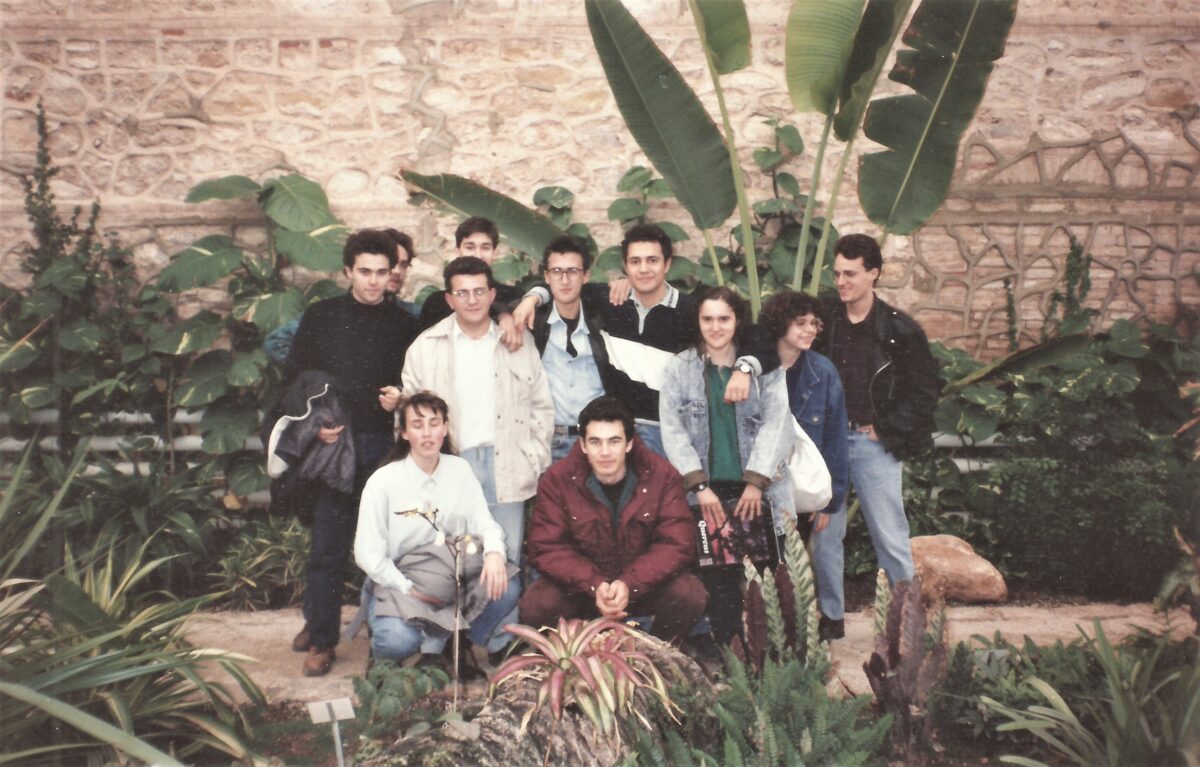
Could you summarise your professional career?
After finishing my degree in Biological Sciences, I did some training courses for secondary school teachers, which was the job opportunity I saw most clearly at that time. During those early years I did some sporadic work in the field and also worked as a cultural manager. In 1999 I was hired as a temporary teacher, first in Palma, where I worked for only one month, and then in Catalonia, where I worked in several secondary schools between 1999 and 2006. During the summers of 2003 and 2004, I was hired by the Quatretonda Town Council to coordinate the first environmental volunteer work in fire prevention and the drafting of the descriptive report of the Quatretonda mountain range for its declaration as a Municipal Natural Site. In 2006, I was hired by the public company VAERSA (Waste-to-Energy) in a technical assistance for the Regional Ministry of Environment as a technician for the conservation of rare, endemic or endangered flora. During the first year I worked in the Castellón region as a flora and micro-reserves technician in this province, and since February 2007, I have continued with the same job as flora and micro-reserves technician, but in the province of Valencia. And up to now.

I would also like to comment on the dissemination work I have been able to do over the years, focusing both on botany and on ethnobiology or ethnonature. I have always considered it very important to disseminate knowledge, so during part of my free time I have been able to prepare several scientific articles, mainly in the field of floristics and with some discreet incursions into aspects of phytosociology and taxonomy. I have also published some books, alone or sharing authorship with friends such as Antoni Conca and Daniel Durà: “Fer herbes a Quatretonda (1998), Plantes medicinals i comestibles (2005), Plantes vasculars del quadrat UTM 30S YJ21 (Benigànim) (2015), Els noms dels éssers naturals. Recerces etnobiològiques a la Vall d’Albaida (2015), La riquesa botànica de la serra de Quatretonda (2017), Una mirada a la Serra. Reflexions sobre un entorn natural (2018), Mons humans, mons naturals (2021). As a direct result of my work, I am also co-author of the books “Catálogo valenciano de especies de flora amenazada” (2010) and “Guía de las orquídeas de la Comunidad Valenciana” (2019).
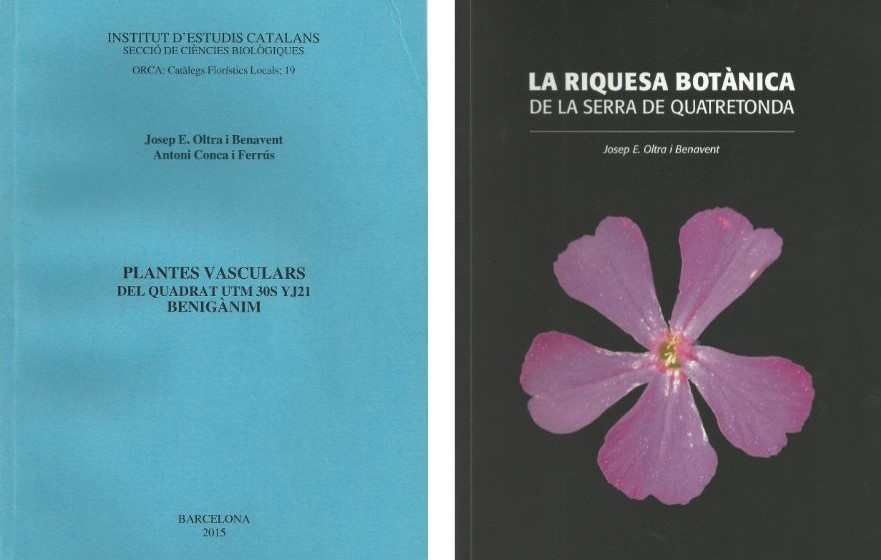
Describe your current job.
My work as a flora and micro-reserve technician is, on the one hand, the management of the network of micro-reserves in the province of Valencia, with all that this entails in terms of field trips to detect the need for maintenance or improvement work to be carried out, recording data to complete the lists of the flora present in each of the micro-reserves, monitoring the general state of the micro-reserves and in particular the flora and vegetation, establishing monitoring plots or going to sites to find out about new areas. In this aspect of the management of the network of micro-reserves, office work is also necessary, in order to carry out various tasks, to collect field data or to prepare various documents, such as for the declaration of new micro-reserves. On the other hand, I make regular field trips to the populations of protected flora in the province of Valencia, to carry out demographic censuses of these populations and also to be able to monitor their conservation status. As I said earlier, in the case of the management of the network of micro-reserves, the field trips to monitor the protected flora also involve office work. In addition, I do a series of tasks such as collecting flora data that are sent to the Biodiversity Data Bank, writing reports, entering data into the corresponding databases, coordination with members of the environmental agents’ collective, etc.
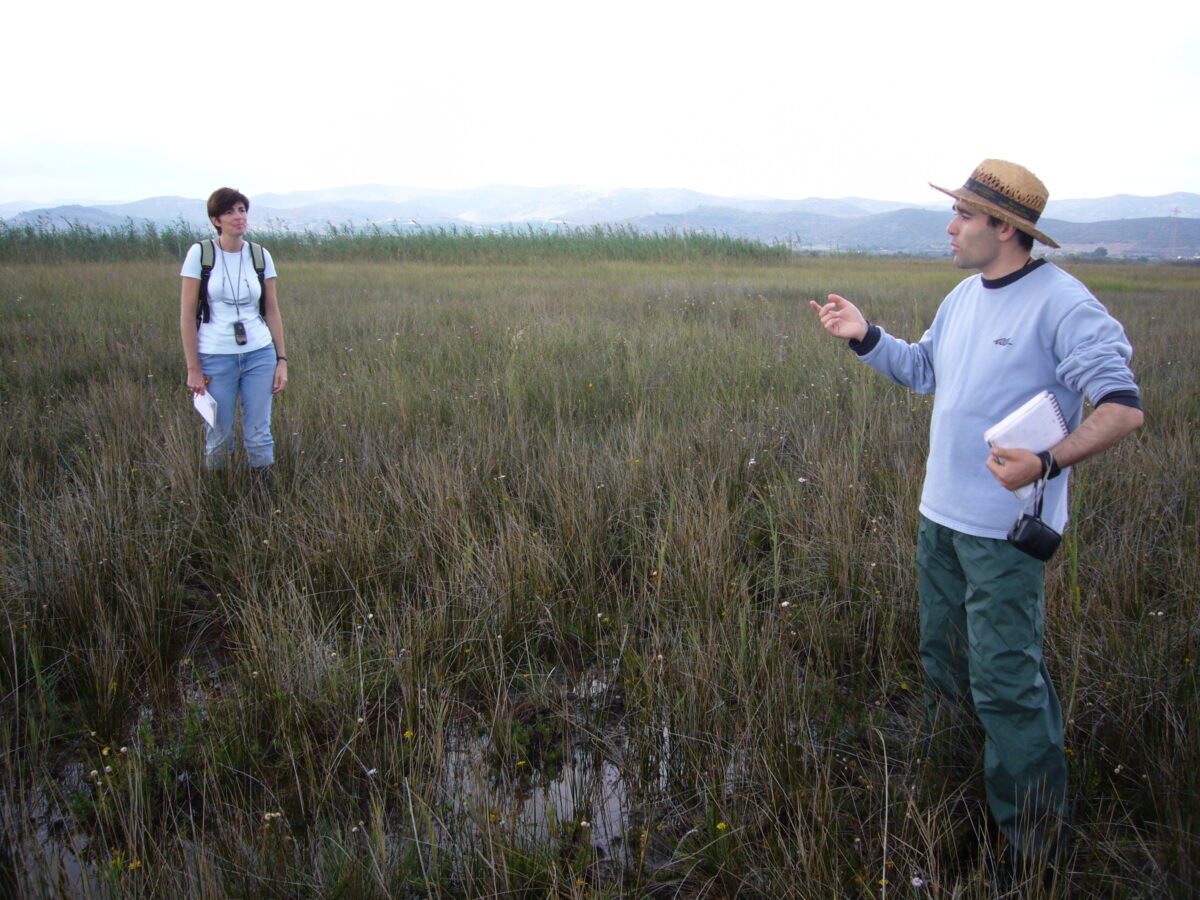
From 2006 to 2018, an important part of my work was the coordination of the Natura 2000 brigades in the province of Valencia, scheduling the work to be carried out, entering the daily reports from the foremen into a database, writing reports on the results and carrying out various other tasks. Since 2018, there has been a specific technician to coordinate the brigades and I have focused more on the tasks described above.
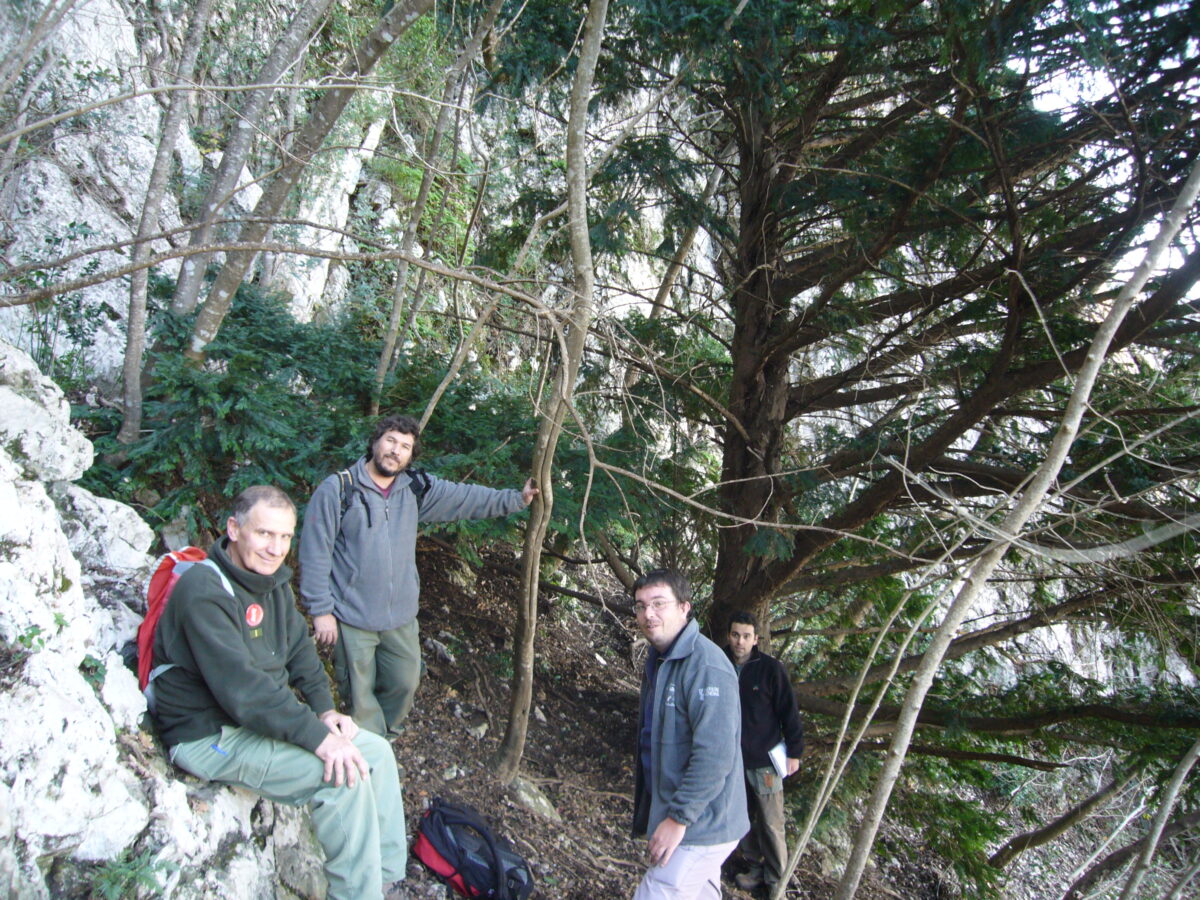
What interested you in your field of study?
At present, there is already a fairly good chorological knowledge of the Valencian vascular flora, but when I started, the knowledge of the presence and distribution of many plants could still be much improved. Therefore, one of the aspects that most interested me at first was to contribute new chorological data. My contribution has added to the contribution of many other people and nowadays there are quite complete distribution maps of the species of vascular flora available. These distribution maps can be consulted, for example, in the Biodiversity Data Bank of the Valencian Community, to which many people have contributed, so that there are currently more than a million data on the species of various groups of organisms in general, and a part of this million corresponds to plants in particular, which allows us to consult, in a quite detailed way, the distribution of species in the Valencian territory.
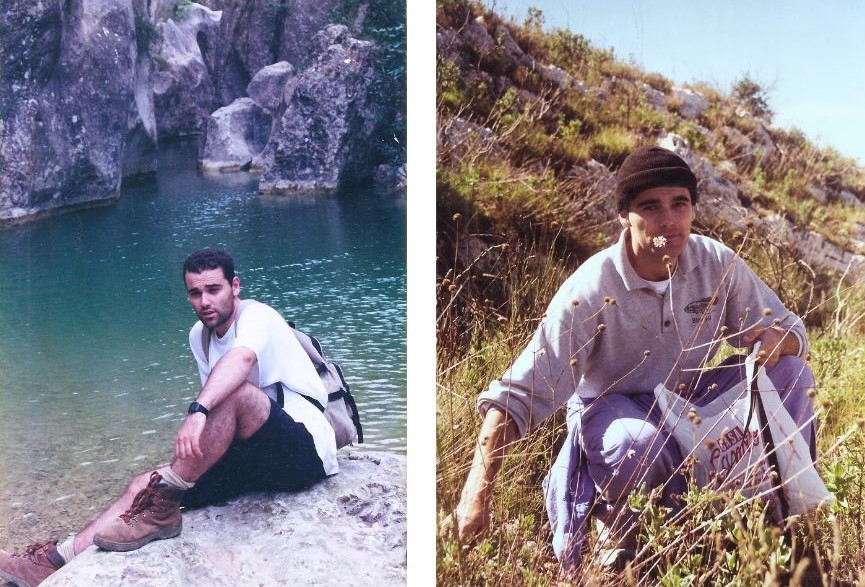
As I said before, what interested me most at first were the chorological aspects and also the world of ethnobotany (both the uses and the popular names of plants), because I believe that there is a wide field of study in popular culture that has often been underestimated. Subsequently, I have also been interested in the study of plant communities and habitats as well as taxonomy, although always from the point of view of a field biologist or botanist. I like to study plants and natural processes directly in nature, and that is what has always attracted me.
Are you proud to have been involved in any project in particular?
Yes, I am very pleased to be participating in the flora micro-reserves project, which began in 1994, created and directed by Emilio Laguna. It is also very important for me to be participating in the monitoring of the populations of protected Valencian flora. Years ago I would never have imagined that I would be doing this work today.
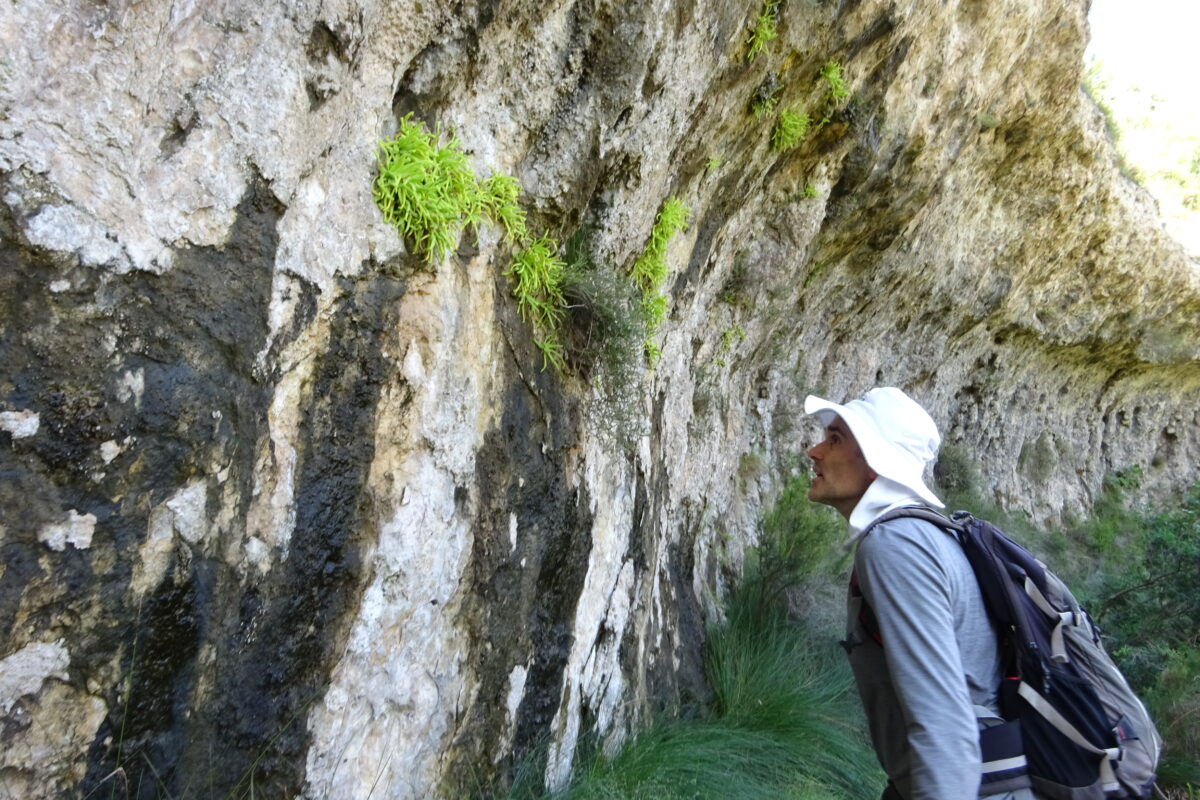
I have also been able to collaborate in some projects, such as the volumes that have been published so far of the Flora valentina work or the ORCA vascular plant mapping project coordinated by Xavier Font. Since I started working as a flora technician, I have also collaborated in the Biodiversity Data Bank of the Valencian Community project, which aims to offer data, in a public way, on Valencian biodiversity and its distribution in the territory. These are all projects in which I am very excited to be able to participate.
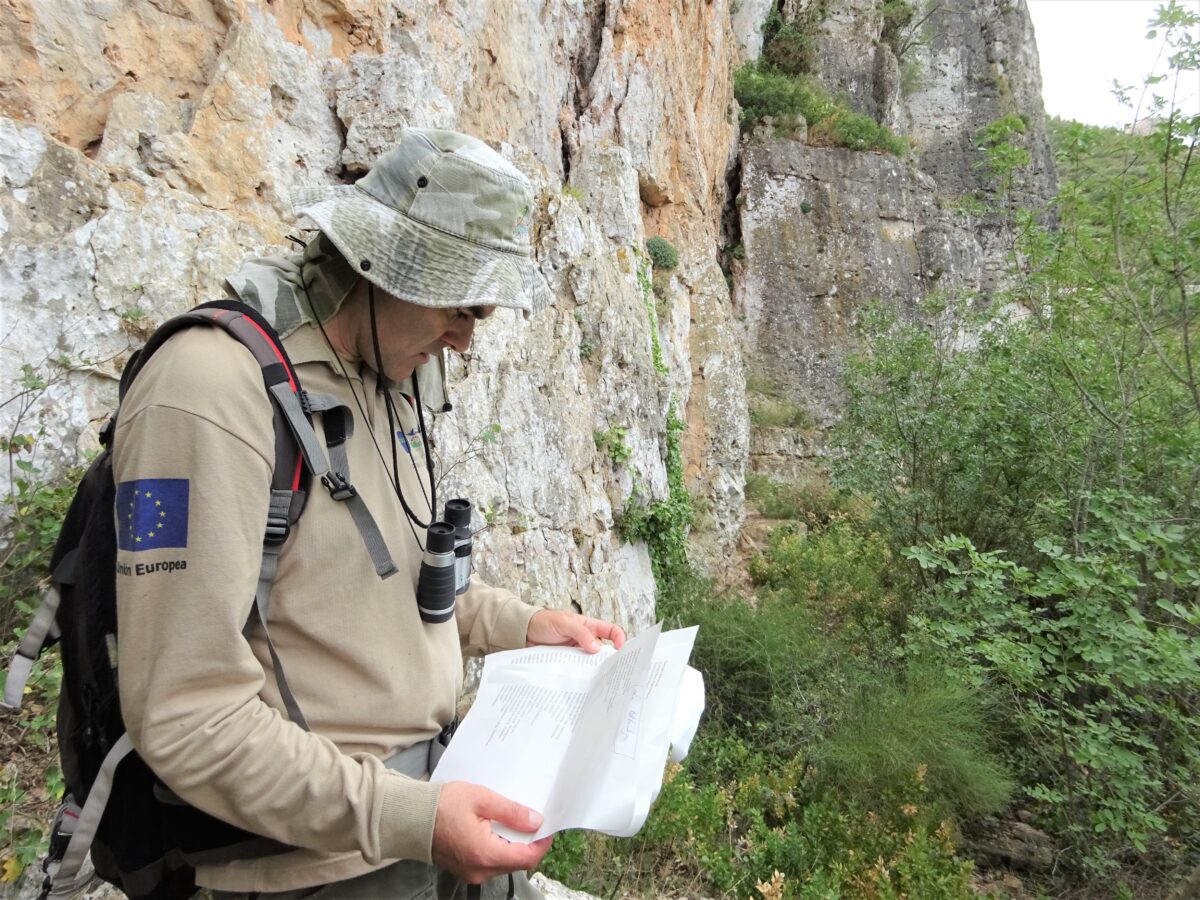
What relationship do you have or have you had with the Jardí Botànic of the University of Valencia?
For me the Jardí Botànic of the University of Valencia has always been a point of reference, for what it represents as an institution for research and conservation of flora and also as an excellent place to visit. I started going to the Jardí Botànic when I was a student, to observe the plants in the living collection and also to visit the herbarium in the old building. Then I continued to go to the new facilities, either to talk to one of the professors or, especially, to go to the herbarium, either to leave material I had collected or to consult the sheets of some plant genera. I don’t go to the herbarium as much as I would like, but I keep in touch with Jesús Riera and Javier Fabado, whom I consult by e-mail or telephone. I also keep in touch with Josefa Prieto and Elena Estrelles from the germplasm bank, for seed collection of some plant populations.
How do you think your work has changed over the years (new technologies, processes, specialities, etc.)?
I have seen some changes since 2006, when I started working with what I do now, although the changes are more evident when you compare the beginning of the micro-reserves of flora project with what we have now. The improvement of map viewers and GIS programmes is what I think has changed the most. At the beginning, the technicians had to work with programmes and cartographic bases that were very precarious compared to those that exist today, because now there are very high quality orthophotos. On the other hand, the publication in 2009 of the Protected Flora Decree also meant a change in the way the whole team worked. That is when the monitoring programme for protected flora began, which has converted into a database of the annual monitoring that is carried out, and with a layer with the location of all the populations that are monitored. When I stop to think about it, I see that all the work that has been done over all these years is impressive.

What is the most unpleasant part of your job and the most rewarding?
I wouldn’t consider it the more unpleasant and the more rewarding, but rather the more or less rewarding. All jobs have things that are more enjoyable and others that can be more burdensome. In my case, luckily, most of what I do is rewarding. I don’t want to go into details, but over the years of doing the work I do, I would highlight the least gratifying when, after doing something, you receive a refusal and you can’t do what you had planned to do.
Do you think that your job allows you to learn about subjects not related to Botany? Give an example.
Yes, this is very curious. The field trips I go on all the time allow me to get to know the territory and, therefore, I can say that they have allowed me to acquire knowledge of geography. I also learn a lot about toponymy, because I use the names of places in each area a lot in my work. And also about geology and lithology, about which I would like to know much more than I know. Lately I have been learning about some species of rhopalocera, i.e. diurnal butterflies, which, thanks to the excellent guide of the Biodiversity collection published by the Regional Ministry in 2010, allows me to determine in some cases those specimens that I have been able to take photos of in the field. I have also learnt a little about beetles, some of which are very surprising when you see them for the first time, like one I found recently and which a friend of mine identified as Chalcophora massiliensis, a large beetle of the buprèstidae family with a very beautiful iridescent appearance.
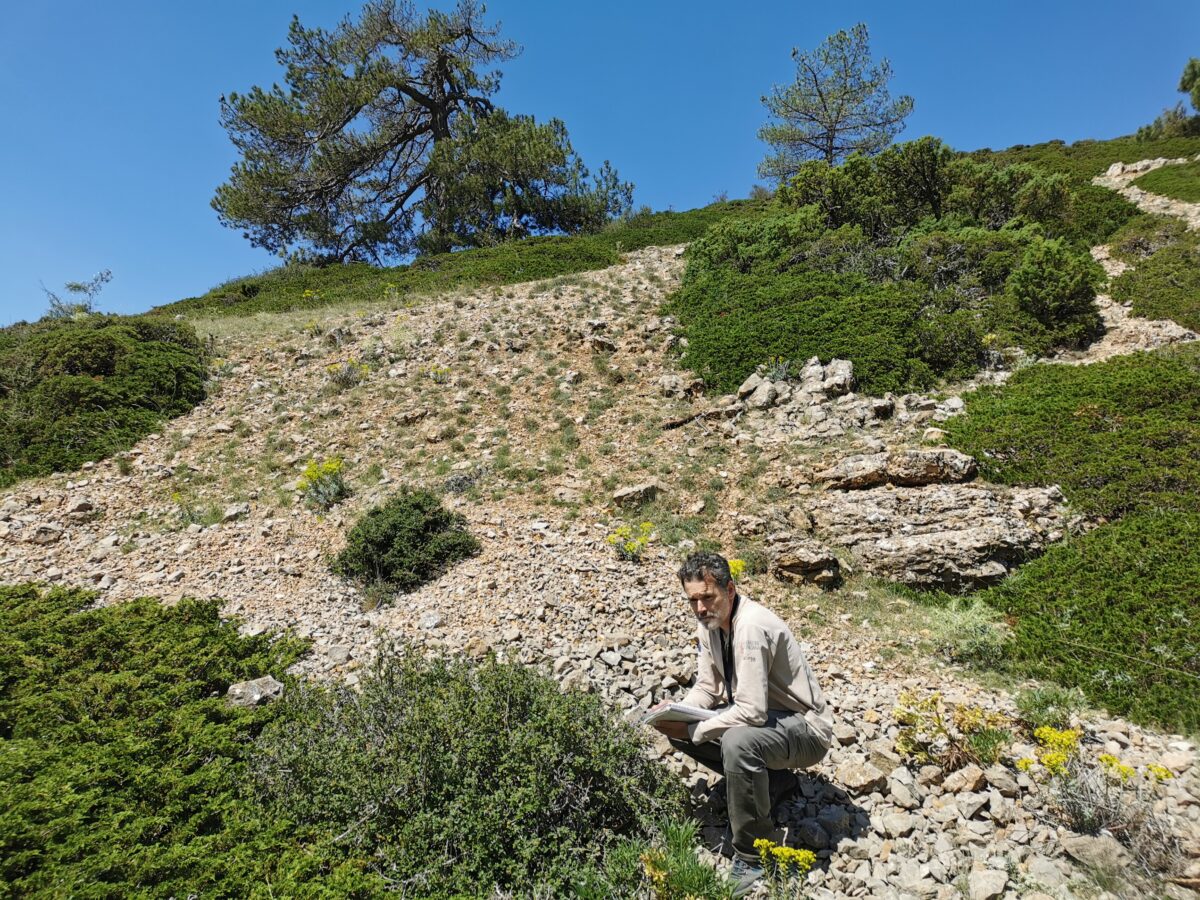
Have you met interesting people through your work?
Of course I did. During my time as a teacher I got to know other teachers who helped me and served as a model for my work. The case of the biologist Josep Cuello is very important to me, because I replaced him for several months when he was on sick leave and, as I knew his name from some of his publications, we became friends, a relationship that still lasts today.
During all the years that I have been working as a flora technician, I have also met many people, from town councils, conservation organisations, the same group of environmental agents, the regional administration, etc. who do very interesting work and believe in what they do. In some cases I have met them again, while in other cases I have already known them for some years, but for work reasons I have been able to get to know them better.
How would you encourage current biology students to pursue the same career as you? What do they lack?
I would like to think that the programme of micro-reserves and the monitoring of protected flora will continue in the future, that in a few years’ time the administration will continue along the lines of all the work that has been done so far. If this is the case, it is to be hoped that the administration will look for teams of people to carry out this work and, at this point, encourage all those biology students who like botany to pursue the objective of working on the conservation of Valencian flora. It needs people who, in addition to the necessary preparation, are passionate about the world of plants and, more specifically, the conservation of flora. I am not up to date with the current curriculum, but there are certainly more options now than when I studied to be able to prepare for aspects of conservation biology.
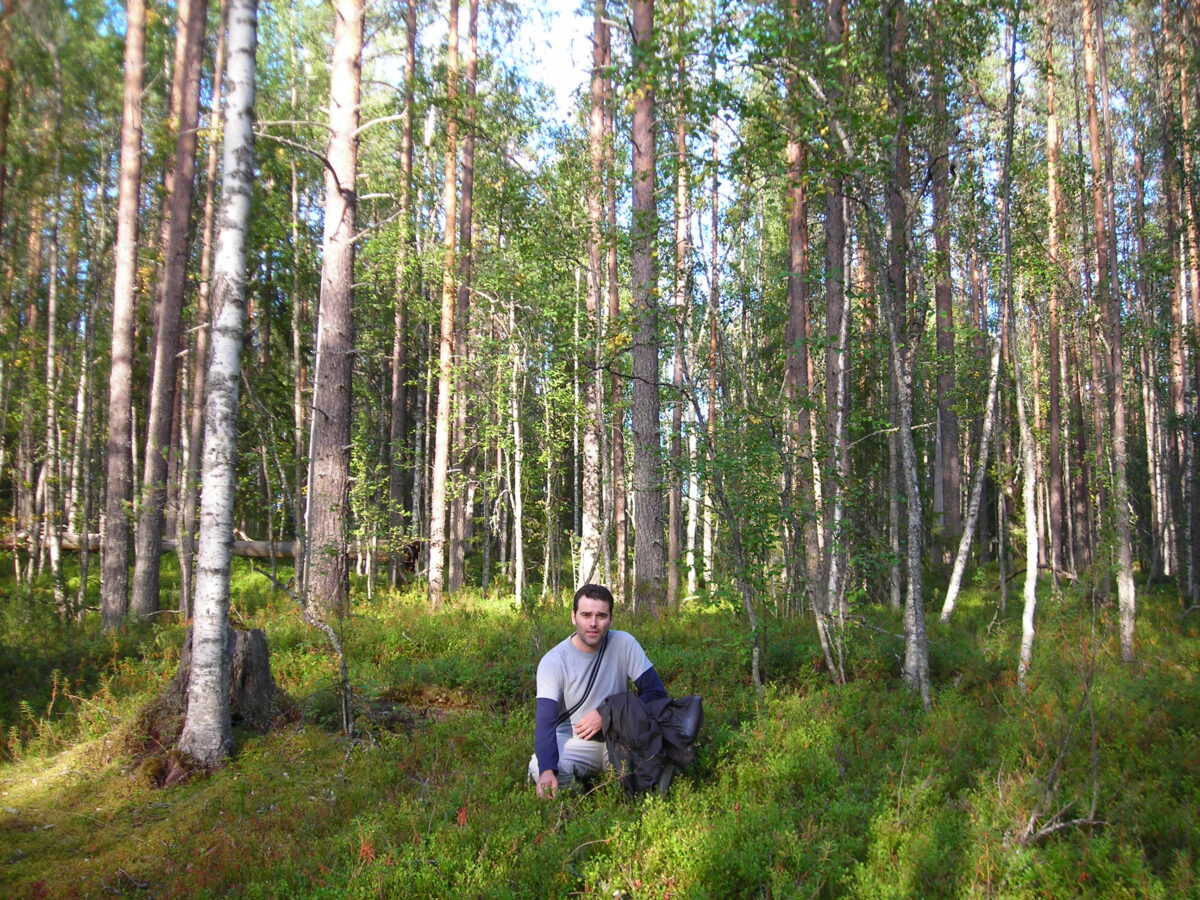
In all these years as a botanist, which is the most curious or the funniest situation, which can be told, you have found yourself in?
The most curious, without a doubt, happened in the summer of 2020, during the weeks I was on maternity leave, but which I was able to experience indirectly. It was when the driver of a large truck loaded with drinks on its way from Teruel to Arcos de las Salinas, following the directions on Google maps, chose the shortest route in distance and ended up falling into the Saladillo ravine (Puebla de San Miguel), right on the border between the provinces of Valencia and Teruel, which is precisely one of the ends of the micro-reserve of flora that bears the name of the ravine. The drinks were left scattered on the side of the ravine, and I understand that some local people went to pick them up before the company’s workers took them away. Fortunately, the driver was unhurt and there was no major damage to the protected plants that grow there and which are true rarities in the Valencian flora, such as Vitaliana primuliflora. Only the branches of some of the juniper trees on the side of the ravine were broken.
Which tools do you need for your job?
For the work I do in the field, I need a GPS device, a mobile phone with which I can work with applications that allow me to load cartographic databases and other layers with information on the location of the plants, a field notebook to make notes on all the work I do, a camera or the mobile phone itself to take photos and a manual counter to take censuses of the plant populations I am monitoring. I also use other tools when I go to the field, but not on such a daily basis as the previous ones. For office work, apart from the typical programmes, for me it is very important to use the map viewer that can be consulted on the website of the Generalitat Valenciana and the Biodiversity Data Bank.
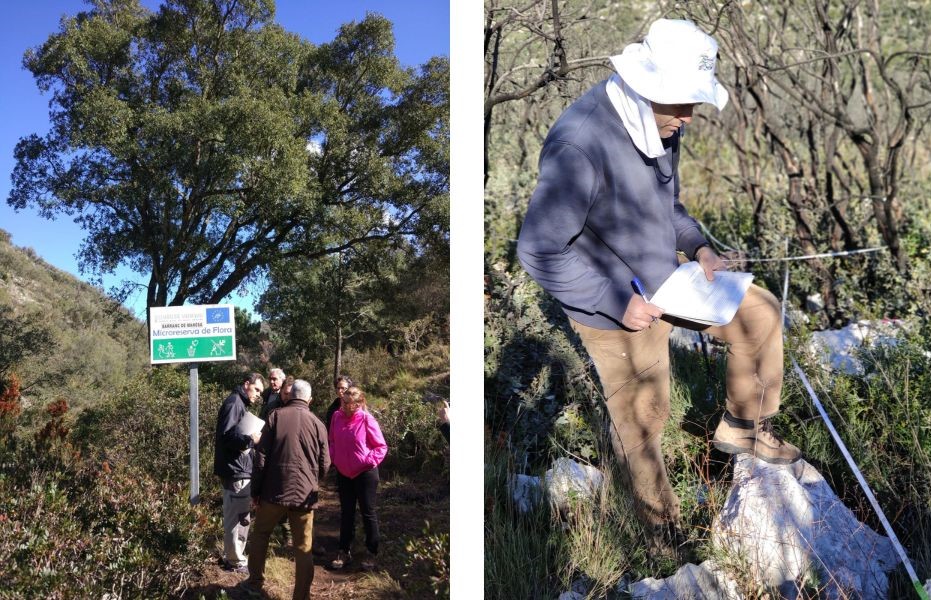
Which is the essential skill for your job?
I find this question curious, because I have never asked myself this question before. I suppose it is important for field work to know how to walk in the mountains. It may surprise the reader that I make this statement, but I think it is important to know how to move on steep slopes, in rocky areas or over a rake where the rocks are like blades. This is a coordination skill of the body that some people innately have more and some have less, but that can be trained by walking from an early age on this type of terrain, which can prevent you from constantly falling, with the repercussions that can result in an accident at work. I also think it is essential to have a certain observational ability. Sometimes, when I go on an excursion with friends, they are surprised that I see this or that small plant, or that I notice some element of nature that goes completely unnoticed by them. I think that this observational ability is necessary if you do field work like mine.
Do you consider yourself a disciple of any particular botanist?
I don’t really consider myself a disciple of anyone in the sense of following a certain line of research or methodology learned from someone who acts as a teacher and guides you in your research. But it is true that when you dedicate yourself to a field of study you must have previously received training from several people. In my case, during my degree I was taught by Gonzalo Mateo, Antoni Aguilella, Josep Antoni Rosselló and Isabel Mateu. In addition, there are several people who have passed on their botanical knowledge to me by sharing hours in the field with them or because they have become botanical references for me in the way they work. It is not a question of making a complete list of all the people who in one way or another have contributed to my botanical training, but I would like to highlight some of them, such as Emilio Laguna, Antoni Conca, Manuel Benito Crespo, Luis Serra and Simón Fos, from whom I have learnt both vascular flora and aspects related to conservation and even the knowledge I have acquired about the world of basidiomycete fungi and lichens.

How do you imagine future botanits?
Floristic botanists, who have a great knowledge of the flora of a territory, who have gained this knowledge by numerous field trips and many hours of research into the material of the species collected, I believe that they are now in danger of extinction. There are fewer and fewer botanists of this kind left. Universities are not training this type of botanist. I can imagine the botanists of the future in the field with mobile applications for species identification, albeit much improved compared to those that currently exist, or with devices that will allow them to take a sample of the plant and know in a few minutes which species it corresponds to.
Which botanist would you have liked to meet in person?
The truth is that I would have liked to meet some botanists in person, such as those to whom we often refer because their contribution to the knowledge of Valencian flora has been very great. To mention some of those who are closer to us, I would have liked to meet and share hours in the field with Carlos Pau from Segorbe, Pius Font i Quer or José Borja. Another person I find quite interesting is the figure of Enric Gros, who worked for years as a botanical collector for the Museum of Natural Sciences in Barcelona, campaigning in many places on the Iberian Peninsula and in North Africa. Moreover, in the case of Enric Gros, who was a man who came from the rural world, botanical knowledge acquired without academic training was combined with a rural knowledge which, for me, makes him a person who would have been interesting to meet and share collecting campaigns with. Also, of course, other relevant botanical figures such as Heinrich Moritz Willkomm or Carl Von Linné himself, who I can’t even imagine what a frenetic activity he must have had receiving materials from his collaborators from many places and he, who came to give scientific names to everything, both in plants and animals. A plant that is so emblematic of Valencian flora due to its use, such as pepper, was also scientifically named by Linnaeus in the 18th century! It is truly extraordinary what this man did.
Do you work alone or in a team? What is it like to work like this?
I consider myself to be part, first of all, of a team of flora conservation technicians who carry out conservation tasks of what is called in situ, and within this task, we include both field monitoring of natural populations and of plantations that have been carried out at a given time and are considered to be stabilised, as well as the management of the micro-reserve network itself. In addition, this team is extended by technicians who carry out what is known as ex situ flora conservation, i.e. maintenance of the germplasm bank, establishment of germination protocols and plant production. Due to my location at VAERSA’s headquarters in Valencia, I also consider myself to be part of a team of technicians who work on the drafting of management rules for Natura 2000 sites, the drafting of various projects and the coordination of the Nature 2000 brigades. For me it is essential to be able to count on this technical team. I have always been used to working as part of a team, and although I go on field trips alone and, as is logical, each person has their own specific task within the team that they are, being able to reach a consensus on many issues and to be able to discuss with colleagues any doubts that may arise for any of the team, I think that this is a very enriching factor.






